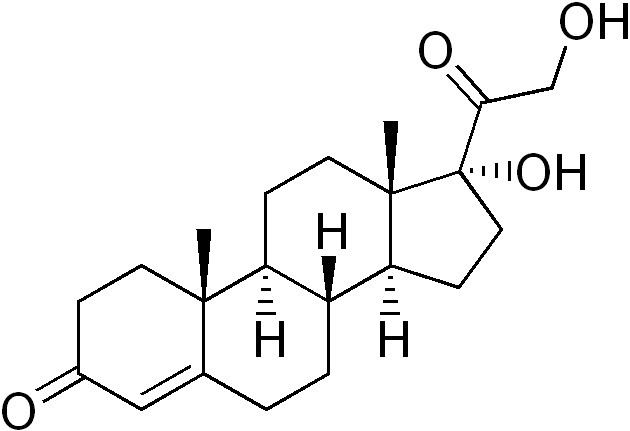Formula C21H30O4 Melting point 215 °C | Molar mass 346.4605 g/mol | |
 | ||
11-Deoxycortisol, also known as cortodoxone (INN, USAN, BAN) or cortexolone, as well as 17α,21-dihydroxyprogesterone or 17α,21-dihydroxypregn-4-ene-3,20-dione, is a glucocorticoid steroid hormone. It was first synthesized by Tadeusz Reichstein, and has also been referred to as Reichstein's Substance.
On April 5, 1952, biochemist Durey Peterson and microbiologist Herbert Murray at Upjohn published the first report of a breakthrough fermentation process for the microbial 11α-oxygenation of steroids (e.g. progesterone) in a single step by common molds of the order Mucorales. 11α-oxygenation of Compound S produces 11α-hydrocortisone, which can be chemically oxidized to cortisone, or converted by further chemical steps to 11β-hydrocortisone (cortisol).
11-Deoxycortisol acts as a glucocorticoid, though is less potent than cortisol. It can be synthesized from 17α-hydroxyprogesterone. In 11β-hydroxylase deficiency, 11-deoxycortisol levels increase dramatically, causing hypertension (as opposed to 21-hydroxylase deficiency, in which patients have low blood pressure from a lack of mineralocorticoids).
11-Deoxycortisol can also be converted to androstenedione. This could explain, at least in part, the marked increase in androstenedione levels in 11β-hydroxylase deficiency.
